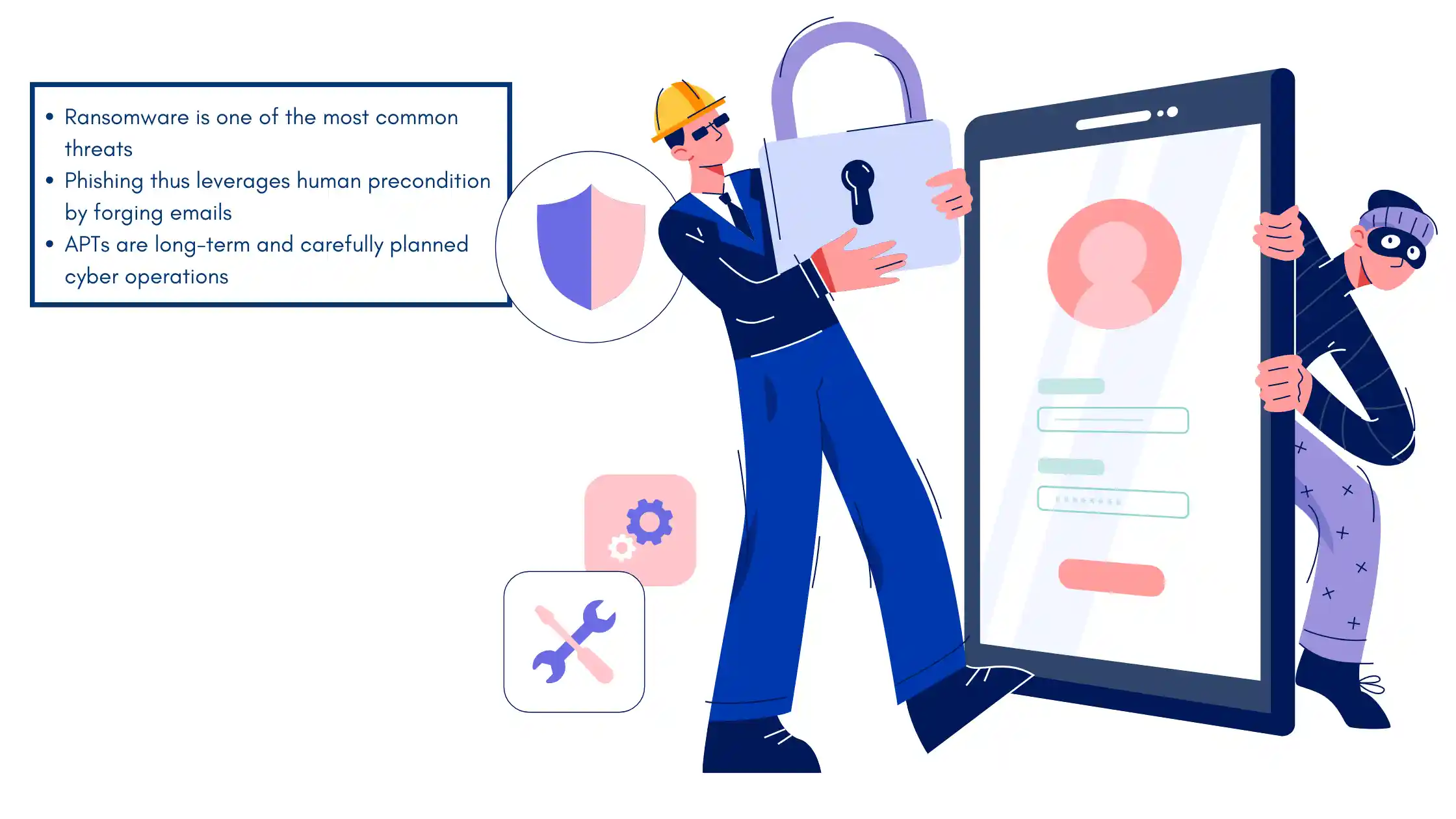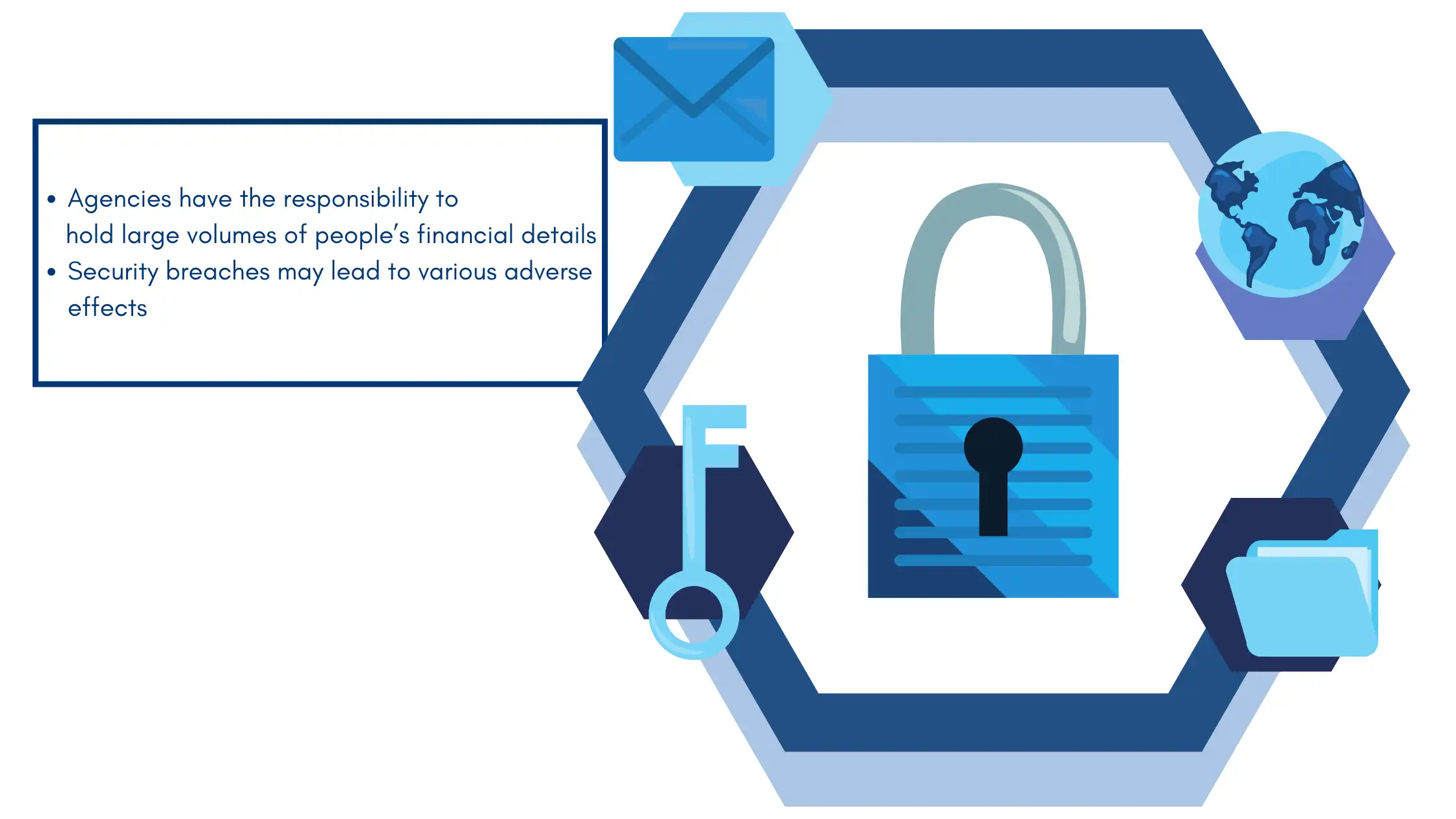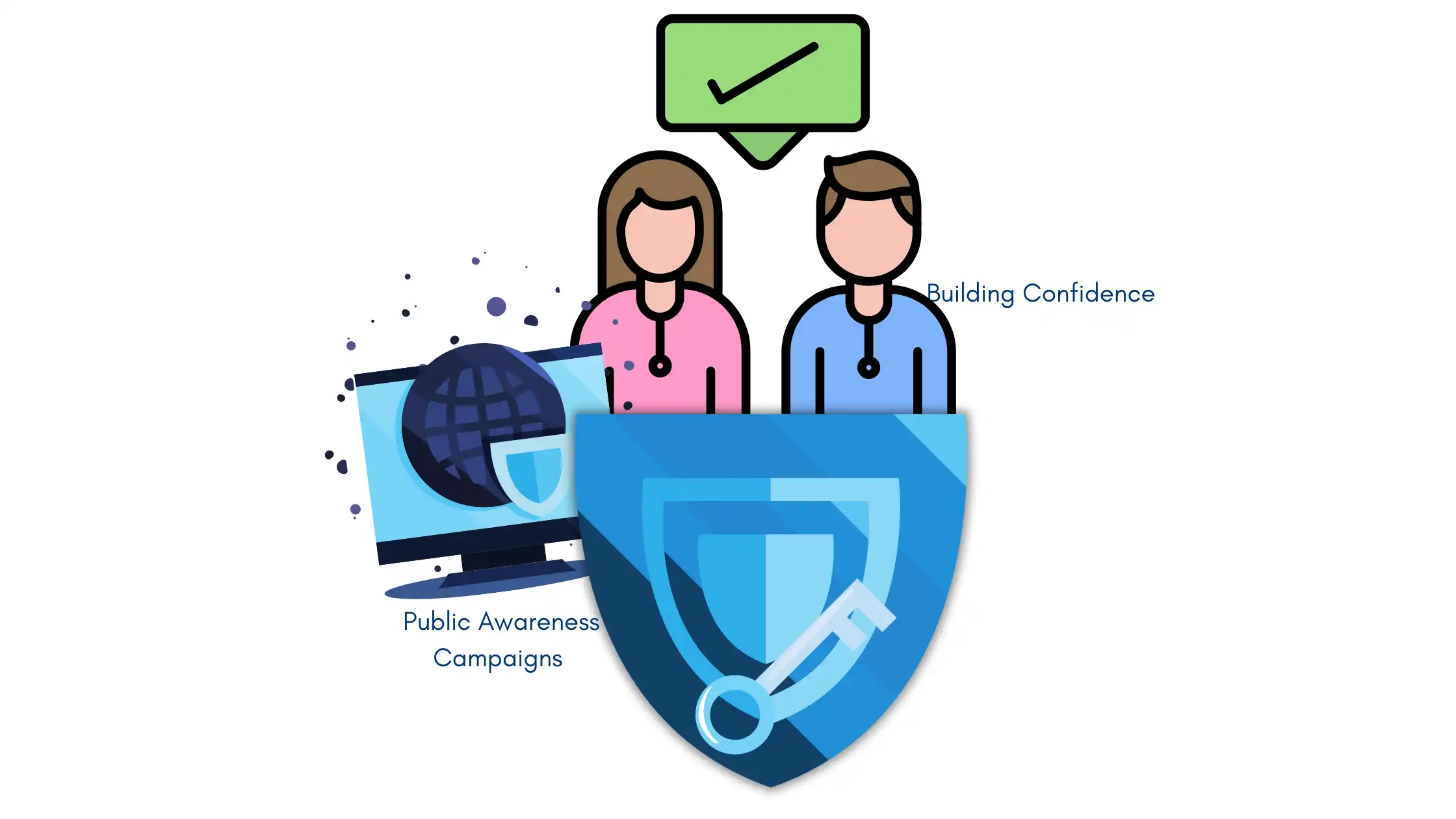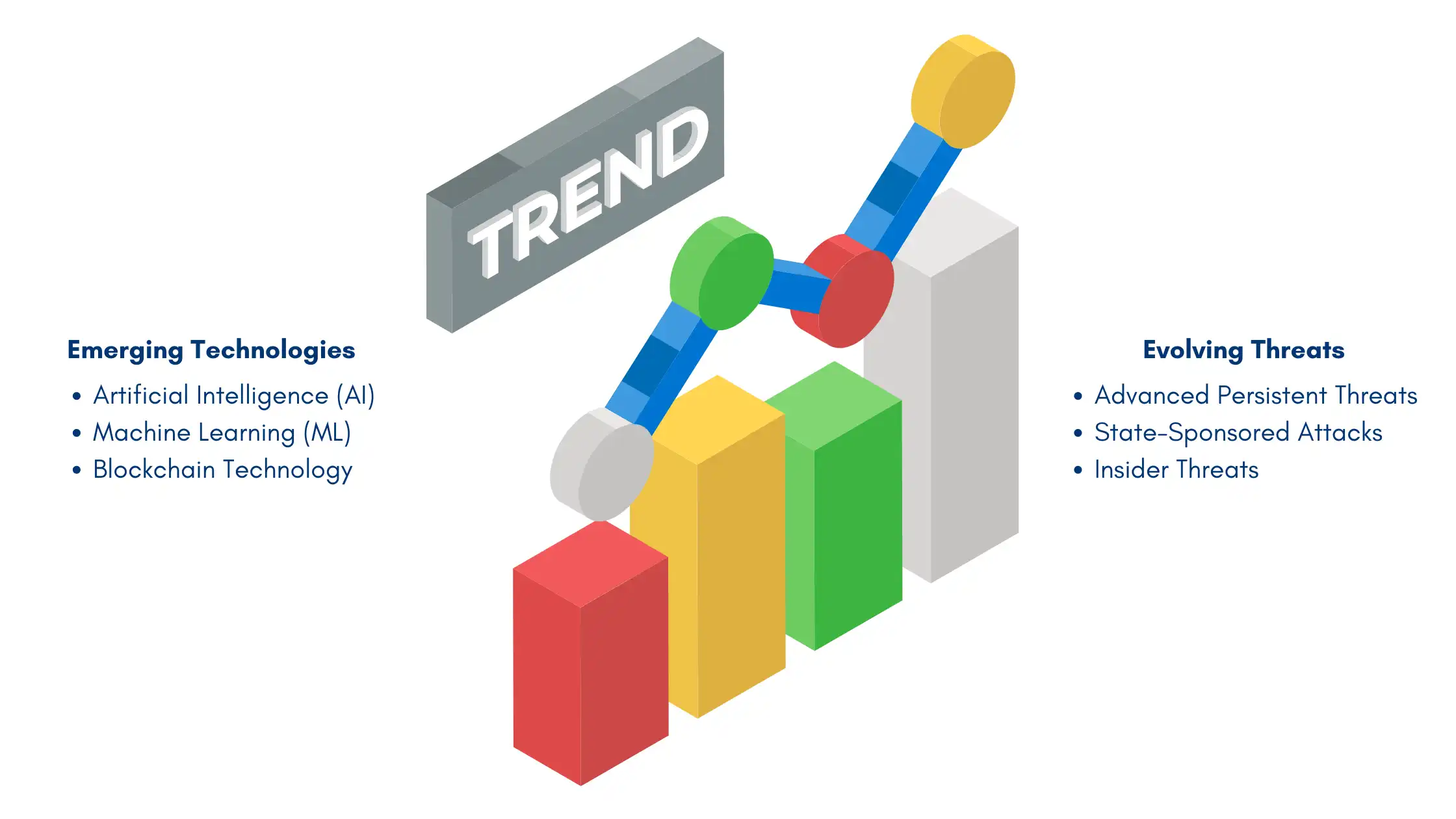In the last few years, the growth of cyber threats and their complexity has been rather sharp in the public sector, and attacks often target important information or infrastructure.
They range from virtual blackmails that make it difficult for city operations to proceed as expected to loss of data that poses harm to the lives of citizens.
This emerging trend is rather worrisome, pointing to the increasing importance of cybersecurity in the public sector.
Through enhanced security measures, proper acquisitions of modern security systems, and the security policies that everybody will follow, the public sector will guarantee that key information is safe, people can trust the authorities, and all critical services will continue to work.
The Current Cyber Threat Landscape

Ransomware
Ransomware is one of the most common threats now, the hackers install malware that encrypts vital information, and they ask for a ransom to decrypt it. To prevent ransomware attacks, organizations must implement strong cybersecurity measures.
Not only does it stop services, but it also poses threats of incurring tremendous losses. For example, according to the survey, the typical total economic losses connected with the ransomware attack in the public sphere exceed $4.54 million.
Including the cost of ransom and the cost of rectification. This highlights the urgent need for public sector cybersecurity measures.
Phishing
Phishing thus leverages human precondition by forging emails to make employees release critical data or even download a virus. These attacks are significant, especially in organizations that deal with citizens’ data as it becomes easily accessible.
Advanced Persistent Threats (APTs)
APTs are long-term and carefully planned cyber operations usually of state-level actors whose intention is to gain access to information or prevent the functioning of services.
It means that these attacks can compromise public sector organizations, especially those dealing with vital infrastructures, and it will provoke drastic consequences for national security and people’s safety.
Strengthening Public Sector Cybersecurity against such threats is essential to safeguard critical infrastructures.
State-Sponsored Attacks
Governments are among the most common targets of state-affiliated hackers who seek to steal information or cripple a country’s machinery.
Geopolitical threat acts have recently boosted the above risks, and with access to sensitive information, the public sector has become the primary focus.
Insider Threats
Insider threats are dangerous to public sector organizations no matter the reason for being an insider.
Many employees are authorized to access organizational systems and thus are capable of either deliberately or accidentally exposing confidential information.
Highlighting the critical importance of public sector data protection through monitoring and training programs.
Case Studies
- WannaCry Ransomware Attack: For instance, in May 2017, the WannaCry ransomware attack impacted several public sector agencies all over the world, subjecting the National Health Service in the UK to significant disruption. It disabled much of health delivery until tens of thousands of operations and outpatient appointments were canceled. It was an eye-opener to the general public on the weakness of public sector organizations and the need to enhance public sector data protection and security.
- Colonial Pipeline Cyberattack: However, largely an organization pertinent to private interests, the foul play was witnessed through its rippling effect of fuel services in the east of the United States of America which benefits the public or the masses. This event proves the point that the public and private sectors are linked during incidents and how a cyber attack on IT infrastructure can cause havoc.
- Toronto Hospital Cyberattack: In mid-2022, one of the largest hospitals in Toronto was paralyzed by a cyberattack that shut down its operations for several days which affected medical practices such as testing for the COVID-19 virus. This example showed how cyber attacks presented acute and chronic effects on society: undermining its members’ confidence in the government, in this case, its health system.
The above exposures depict how necessary it is for the public sector organizations to improve their security strategies to embrace the new technology and the need to embrace cultural changes by training employees on how best to avoid new threats.

- Lightning-fast speeds to browse without lag
- Servers in 105+ countries around the globe
- Military-grade security to stay safe online
- Try it risk-free with its money-back guarantee
- Native apps for all major devices
The Role of Cybersecurity In Protecting Sensitive Data

Data Privacy Concerns
These agencies have the responsibility to hold large volumes of people’s financial details, health info, and even their social security numbers.
Preserving such information is vital for countering various fraudulent actions, identity theft, and such situations that harm the public.
Security breaches may lead to various adverse effects as some of the victims may end up losing their money, and jobs, or face embarrassing moments in public.
Therefore, implementing robust cybersecurity policies for government entities is essential to safeguarding this sensitive data.
Accessibility controls, encryption, and security checks are some of the facets that cybersecurity policies for government ensure are adhered to by enforcing stringent measures.
Thus, it can be stated that government agencies should be active in the protection of data to reduce the likelihood of data breaches and maintain the confidentiality and integrity of the information.
Regulatory Compliance
Data protection and other cybersecurity policies in the public sector are characterized by legal requirements and restrictions as a result of the nature of the business.
These mandates are meant to protect such information and ensure organizations are up to the challenge in the event of a data breach.
Key regulations include:
- General Data Protection Regulation (GDPR): Similar to the EU data protection law, GDPR sets and enforces stringent policies and measures that organizations must adopt in the collection, use, and/or storage of EU citizens’ informational data. This compliance can again cost a lot of money – failure to do so can lead to massive fines and the company’s reputation being scorned.
- California Consumer Privacy Act (CCPA): CCPA was passed in 2018 and describes rights of the California residents concerning their personal information, as well as obliges businesses to apply an adequate level of data security.
- Health Insurance Portability and Accountability Act (HIPAA): HIPAA is another set of guidelines for safeguarding patients’ health information which requires encryption, access control, and periodic risk analysis.
Enhancing Public Trust Through Cybersecurity

Building Confidence
It is vital to ensure that the government services come with well-applied measures to secure users’ data to increase the confidence reaped in the services.
When civil servants make a cognitive appraisal that their information is safe and that the corresponding government institutions are doing everything possible to safeguard their data through robust cybersecurity policies for government, trust in those institutions rises.
Many protective measures including encrypted data, periodic security assessments, and response plans show a company’s seriousness in protecting public information.
Also, reporting the episodes with regards to cybersecurity often, and being open concerning practices makes for trust.
This is why through the openness of the actions taken to safeguard their information, the public will feel safeguarded or comforted that they are safe with the specific government agencies.
Public Awareness Campaigns
Raising awareness of the existence of cybersecurity measures and the need for citizens to protect their data is critical for erecting a solid cybersecurity system.
Educational campaigns can extend fundamental consumers’ understanding of typical threats and instruction on how to distinguish and avoid risks like phishing and ransomware.
Such campaigns educate citizens on the security measures for using devices and accessing networks as well as the security measures to observe in social networks and the Internet in general, and this prepares the citizens to take an active role in protecting their data.
In addition, advocacy for the inclusion of the community in dialogues concerning cybersecurity orientation can promote government coordination on cybersecurity policies for government and practices, hence in combating cyber threats.
Demand and Importance of Cooperation as well as Information Exchange
Interagency Collaboration
- Strengthened Defenses: The revealed governmental departments’ collaboration enhances cyber security against contemporary threats.
- Intelligence Sharing: Agencies may share information, equipment and experience, to increase their awareness of the environment.
- Breaking Down Silos: It makes the fight against cyber crimes to be more like there is togetherness because actions will be coordinated.
- Example of DHS: The formation of the Department of Homeland Security DHS relied on addressing local and global threats due to the encouragement of inter-agency cooperation.
- Joint Initiatives: The collaboration enables agencies to collect and analyze information, for conducting cases, as well as for the construction of a complete plan for cyber security.
- Improved Response Times: This makes it easier to provide a quick and effective response to the changing threats when people are combined into a group.
- Building Trust: The trust that is established between agencies and the general public underlines general security strategies.
Partnerships with the Private Sector
The private sector is one of the most important stakeholders in the development of the country and hence, cooperation should be by the demands posed by the private sector.
- Access to Expertise: Some personnel sometimes cooperate with specialists from other organizations, which enhances the chances of obtaining fresh information and better instruments.
- Innovative Solutions: Thus, this paper proposes a partnership with the private sector since it can offer new strategies to support the government’s cybersecurity.
- Real-Time Threat Intelligence: One of them is by exchanging information with the private firms that support the government agencies to receive threat intelligence and practices in real-time.
- Tailored Strategies: Thus, via coordination mechanism, sound solutions to emergent issues regarding security can be formulated regarding the existing scenario of the public entities.
- Security Assessments: Like any other profession, there are some benefits of security experts which can be summarized as follows: different government agencies can consult with the private sector to properly perform security assessments and perform vulnerability scans.
- Robust Incident Response Plans: Such affiliations can strengthen the establishment of general approaches to managing occurrences, as per cases of violations.
- Resilient Cybersecurity Posture: This is so because due to the governments and private organizations’ combined efforts in formulating a strong security system that plays a role in the protection of such information, the public is encouraged to embrace organizations.
Future Trends in Public Sector Cybersecurity


Uninterrupted, high-speed browsing, zero logs so your online activity is always private.
Over 7000 people checked out NordVPN in the last month
Emerging Technologies
Artificial Intelligence (AI)
- It can automatically identify threats and respond to them as well.
- Examines a mega volume of information to determine unpredicted patterns and possible threats.
- Proper implementation of the theories of this framework strengthens proactive defense mechanisms and aligns with emerging public sector cybersecurity trends.
Machine Learning (ML)
- Increases the rate for strengthening threat identification over the sender’s time.
- They also adapt to the new attacks’ patterns and help decrease the number of false positives, which is crucial for staying ahead in public sector cybersecurity trends.
Blockchain Technology
- Ensures data storage that is safe and is not hosted by any particular entity.
- Ensures that substantial systems have audit logs.
- Security increases the level of trust and integrity of data being exchanged.
Integration of Technologies
- AI integrated with ML and block chain makes cybersecurity structures more reliable.
- Mitigates the risk of dependency on single sources or elements.
Evolving Threats
Advanced Persistent Threats (APTs)
- Supposed to improve in complexity, synchronize with attacks, and steal from sensitive government data.
- Usually supported by states, may demand sophisticated diagnosis and prevention procedures.
State-Sponsored Attacks
- Powerful enough to impact and possibly control large organizations and institutions as well as sectors that are most likely to be vulnerable to cyber-attacks.
- Requires better cooperation and information exchange between the agencies.
Insider Threats:
- There will always be a great danger to everyone with a pointer and clicker being a possible insider threat, whether intentional or unintentional. Public sector data protection requires UBA and access controls to address these threats adequately, as it involves identity theft among other risks.
- Would need UBA and access controls to address adequately, as it involves identity theft among other risks.
Need for Adaptive Strategies
- This is even more important for organizations in the public sector since there are no ‘safe’ organizations anymore – all are targets of various attacks and thus have to take a proactive, risk-based approach to cyber security.
- Both are critical as there should be consistent checks, and security audits should be conducted frequently.
Collaboration with the Private Sector
- One would agree that cooperation and exchanging the best practices will be important when it comes to tackling emerging threats, particularly in the realm of public sector data protection.
- Working with cybersecurity firms is beneficial due to coming up with new ideas and solutions as well as from professional input.
Agile Incident Response Plans
- Having fast and dynamic plans in responding to the existing threats so that the best approach can be deployed if the current one is inefficient.
- Maintaining preparedness to be able to handle incidents in the right manner as well as within the shortest time.
On balance, the longitudinal report indicates that the public sector’s approach to cybersecurity will rely on the integration of AI, ML, and the blockchain, as well as the understanding of processual threats.
In essence embracing partnership and flexibility in operations, the government can improve its status of cybersecurity and safeguard the confidential data.
FAQs Regarding Importance of Cybersecurity in Public Sector
Why is Cybersecurity important for the public sector?
In what way does cybersecurity affect the level of public trust?
What is the part played by regulations in the public sector cybersecurity?
How can public sector employees contribute to cybersecurity?
Conclusion
As for the final words, cybersecurity in the public sector is a necessary aspect since it is a matter of protecting vitally important information, confidence in public organizations, and uninterrupted provision of services to the population.
Today’s cyber threats are becoming more diverse and recurrent than ever before; therefore, government sectors must invest in providing improved cybersecurity in the public sector and promoting a culture of security compliance among personnel.
In this paper, state and local governments, as well as other public organizations, demonstrated that regardless of the specific goals and objectives set within their agencies.
Local communities or organizations local and state government organizations can increase the level of their protection against cyber threats through the employment of proper tactics and compliance with the relevant regulation, as well as proper cooperation with private businesses partners.
Lastly, securing the nation’s information systems benefits more than the physical structures.
It also helps develop the citizens’ trust in government bodies to provide secure services as it adapts and expands the society’s functioning to digital environments.






